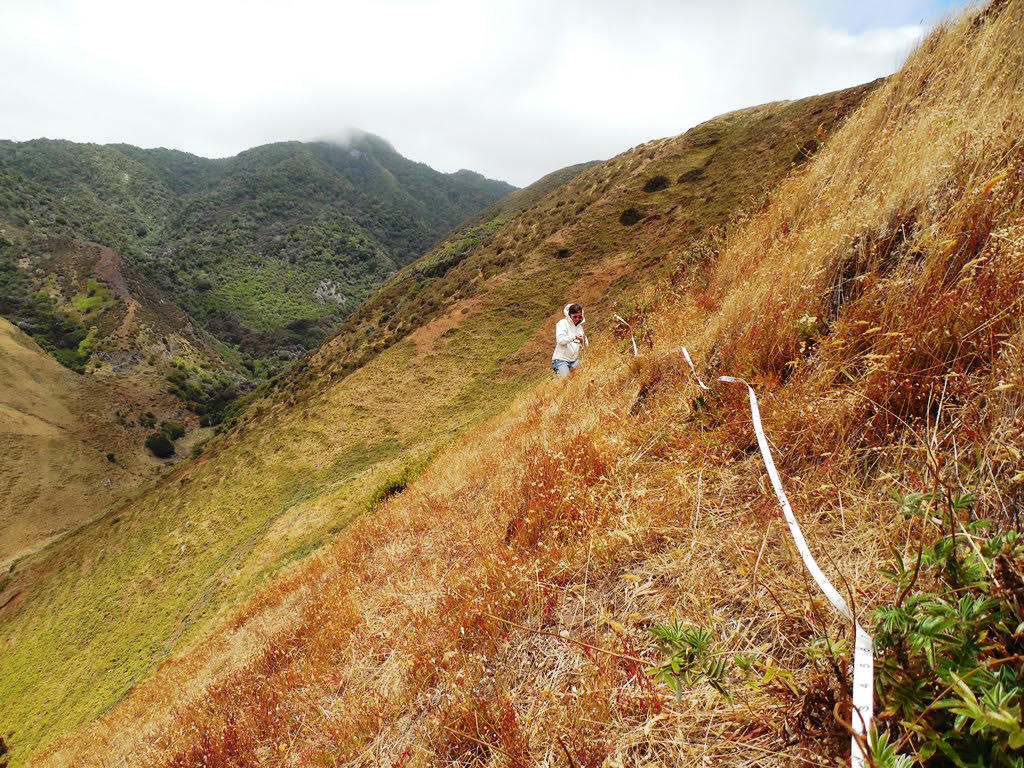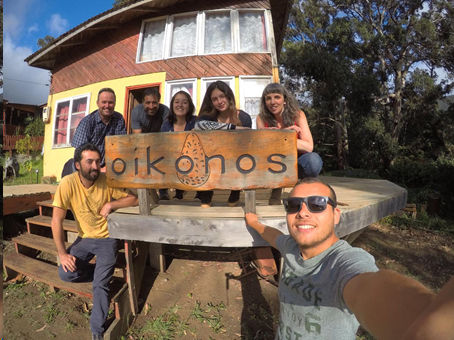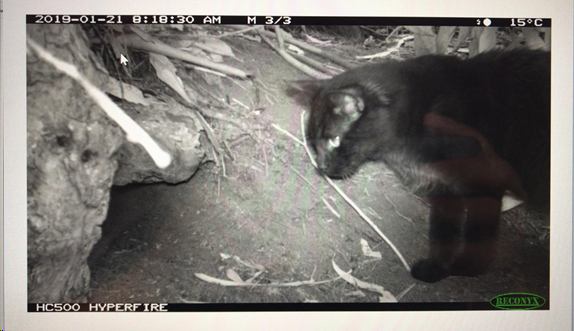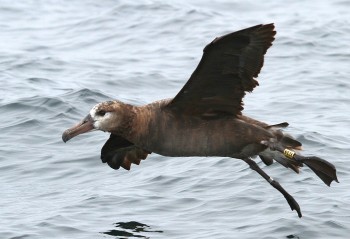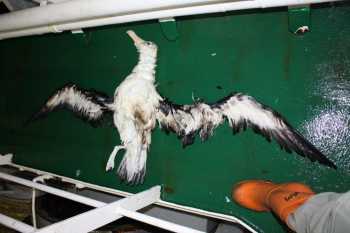Over the five-year period (2014-2018) the Chatham Island Taiko Trust has collected globally Vulnerable and nationally Naturally Uncommon Chatham AlbatrossThalassarche eremita chicks from the Pyramid, the species’ sole breeding site and hand-reared them to fledging behind a predator-proof fence at The Gap on New Zealand’s Chatham Islands. The aim is to establish a second breeding colony as an “insurance”, in the hope the fledged chicks – a total of 281 over five seasons – would return to The Gap rather than to their hatching site on the Pyramid.
The Trust has been expecting the first translocated juveniles to start returning after five years (i.e. this or next year for the 2014 cohort of 50 birds). So far none has been seen back at The Gap; the Trust states on its Facebook page “monitoring is limited to two fixed cameras taking hourly photos of two parts of the colony, so it is possible we are missing the action.”
However, a recent field trip to the Pyramid has resulted in no less than eight translocated birds - all of the first 2014 cohort - being seen ashore in the breeding colony. “The find was a real surprise, as we thought the birds were at least a year off starting to return, they are only just turning five years old now. Interestingly, 7 of the 8 birds were male, which may suggest that males return at a slightly younger age than females, and perhaps are less likely to shift to new areas.”
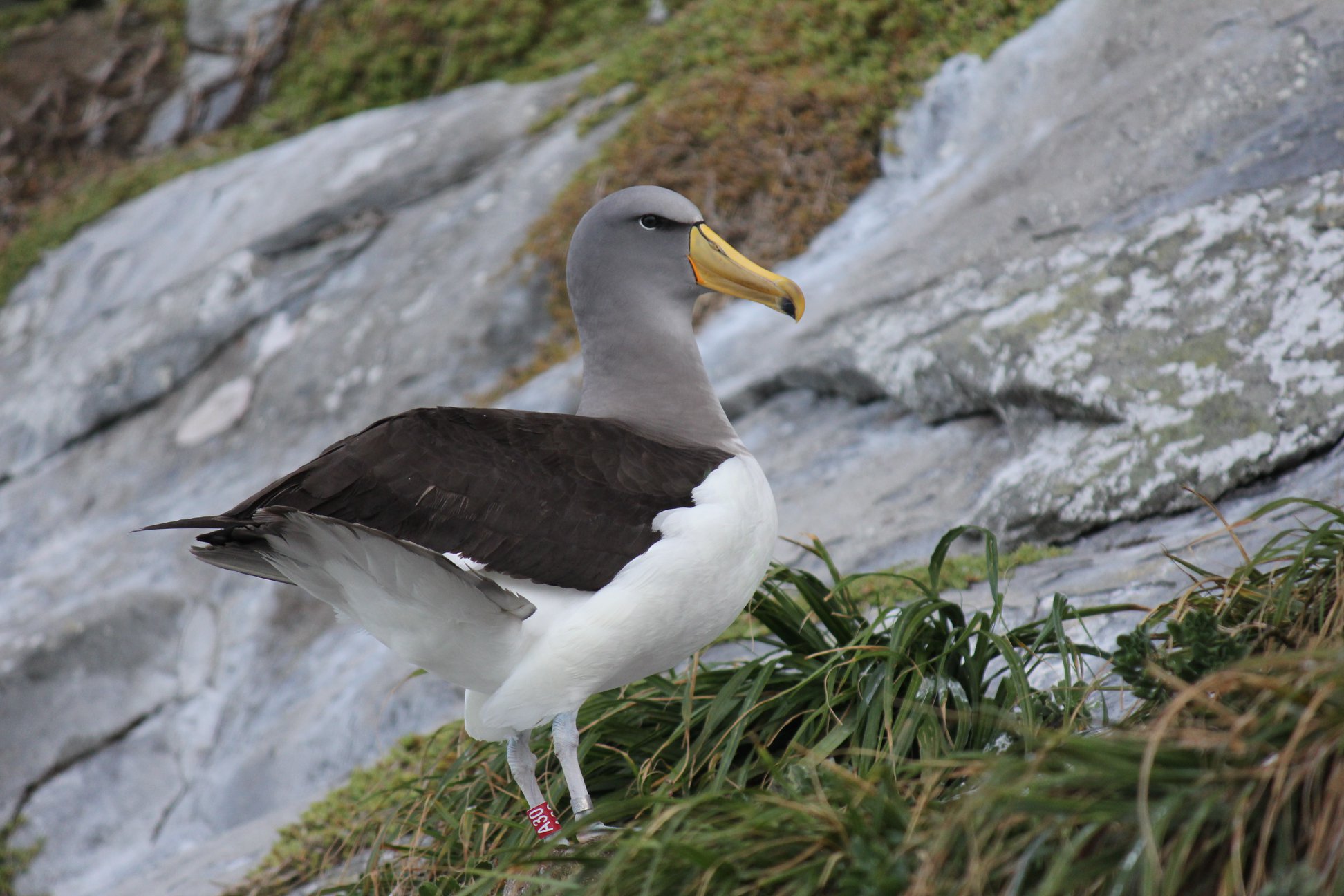
Translocated Chatham Albatross A30 ((Rocco, fledged 12 April 2014) seen back on the Pyramid five years later; the other seven 2014 juveniles seen on the Pyramid this year, along with the names given them by sponsors, were A04 - Jcap, A07 - Bunny, A25 - Alec, A34 - Rimu, A39 - Dough Boy, A44 - Angus and A48 - Joney
So what does this mean for the project’s chances of success? The Trust gives it opinion: “Obviously this unexpected discovery raises some interesting questions for our translocation project - we are currently digesting this information and trying to determine what it means and where to from here”.
E17 of the third (2016) cohort (sponsored as Come-on-Eileen and fledging on 13 April) was photographed at sea off Valparaiso, Chile on 10 December 2016 (click here).
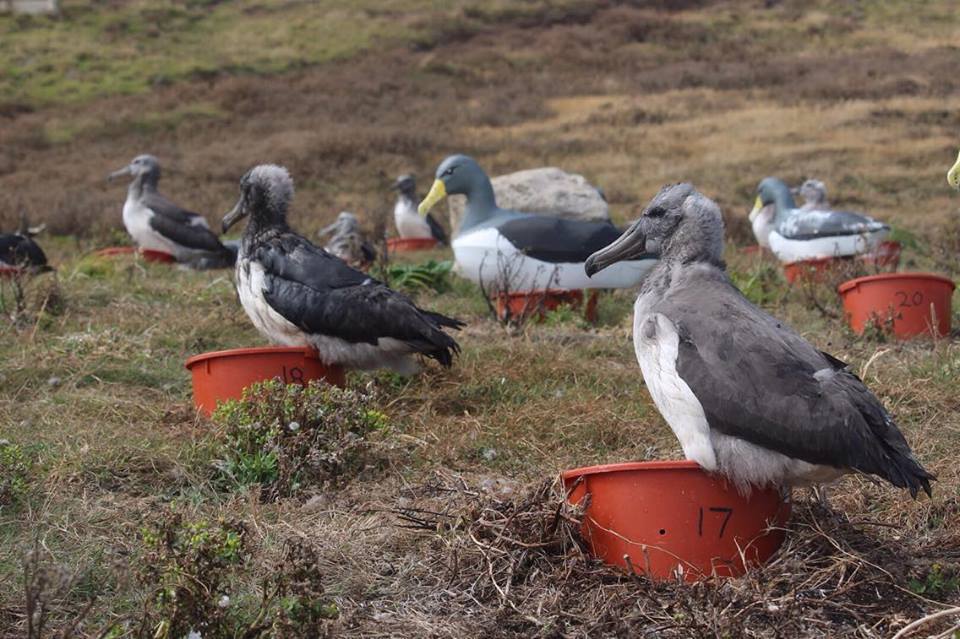
Translocated Chatham Albatross chick E17 at The Gap, seen at sea off Chile eight months after fledging
Photographs from the Chatham Island Taiko Trust
The only other bird so far reported after fledging was from the final (2018) cohort; it was found dead on a Chatham Island beach two weeks later. See earlier ALN postings on the translocation project.
The Chatham Island Taiko Trust is a non-profit community conservation trust, established in 1998 by Chatham residents, to protect and recover our unique and precious island's wildlife with the support and involvement of the Chatham Island community.
With thanks to Dave Boyle, Chatham Island Taiko Trust.
John Cooper, ACAP Information Officer, 15 March 2019

 English
English  Français
Français  Español
Español 